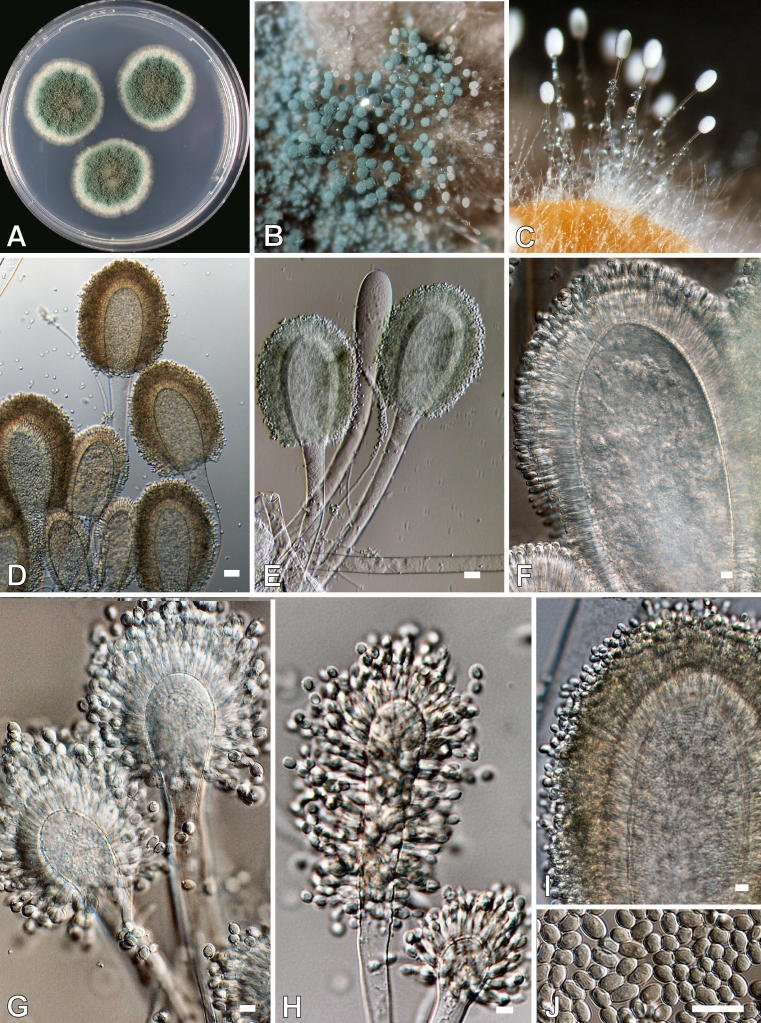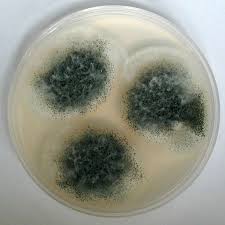One type of fungus in the Aspergillus genus is Aspergillus clavatus. It is notable for having unusual conidiophores that resemble clubs and is frequently found in soil and decomposing vegetation. Significant effects from this species may be seen in a number of areas, such as agriculture, food production, and health.
Table of Contents
- Millions of minuscule spores, called conidia, are released into the atmosphere and are ingested. They induce allergic reactions in persons with weakened immune systems, which can be severe.
- Through sporulation, the conidia are created asexually and released into the atmosphere.
- This fungus that resembles mold is known to produce antimicrobial metabolites that are utilized in the pharmaceutical industry in addition to toxic mycotoxins.
Taxonomy and Morphology of Aspergillus clavatus
- Kingdom: Fungi
- Phylum: Ascomycota
- Class: Eurotiomycetes
- Order: Eurotiales
- Family: Trichocomaceae
- Genus: Aspergillus
- Species: A. clavatus

Morphological Characteristics of Aspergillus clavatus
- A. clavatus produces huge, smooth, club-shaped conidiophores that can reach heights of several millimeters.
- The asexual spores known as conidia are smooth-surfaced and usually spherical to ellipsoidal in shape.
- Because of the pigmentation of the conidia, A. clavatus colonies on solid medium frequently have a blue-green to gray-green appearance.
- Normally, the hyphal cells brach to create the foot cells.
- When the conidia are young, they have a broad head and a club-like structure. This is known as clavated, where the apex is thicker than the base.
- The conidia are extremely small, ranging in size from 3.0 to 4.5 X 2.5 to 3.5 μm.
- They have clavated, elongated, club-shaped vesicles, and their entire surface is covered in phialides. The vesicle seems short and thick as a result.
Habitat and Ecology of Aspergillus clavatus
- In nature, A. clavatus is widely distributed and is frequently found in soil, decomposing plant matter, and stored grains.
- It grows well in areas with a lot of organic matter, such compost piles and decomposing plants.
- It is also possible to keep this species isolated indoors, especially in humid climates.
Industrial and Agricultural Relevance
- Proteases and amylases, two industrially valuable enzymes produced by A. clavatus, are employed in the food and beverage sector.
- Additionally, it contributes to the synthesis of organic acids like gluconic and citric acids.
- It may, however, contaminate grains and other agricultural products that are kept in storage, causing deterioration and financial losses.
Health Implications of Aspergillus clavatus
- Agricultural workers and other sensitive people may experience respiratory problems due to extended exposure to A. clavatus, which is regarded as an allergenic species.
- It is also known to create mycotoxins, which can be harmful to both humans and animals. Examples of these include patulin and cytochalasin E.
- A. clavatus has occasionally been linked to opportunistic infections, particularly in people with impaired immune systems.

Identification And Detection
- The most common method for identifying A. clavatus is to morphologically examine its conidia and conidiophores.
- Accurate identification also makes use of molecular techniques like the polymerase chain reaction (PCR) and sequencing of particular genomic areas.
- Environmental sample detection frequently entails culture on certain media, followed by microscopic and molecular examination.
Prevention and Control
- In agricultural settings, controlling A. clavatus requires using appropriate storage techniques to lower moisture content and stop fungal development.
- Using preservatives and fungicides can also aid in controlling contamination in food and feed items.
- Retaining low humidity levels and adequate ventilation indoors can help stop A. clavatus and other fungi from growing.
- Reduce exposure by eliminating any potential mold-causing factors.
- Barley farmworkers should wear protective clothes, such as face masks, to reduce exposure.
- To lessen and get rid of fungal spores, especially in homes with immunocompromised patients, treat damp and moist domestic surfaces using antiseptic solutions.
- Seek expert advice on mold eradication.
Frequently Asked Question(FAQ)
What is the common name for Aspergillus Clavatus?
A. clavatus is also referred as a cosmopolitan fungus.
What are five characteristics of Aspergillus?
Important characteristics include conidia that are noticeably echinulate, mature vesicles with phialides all over them, spreading yellow-green colonies, and stipes with rough walls. Susceptibility to antifungals: Complex of Aspergillus flavus
What color is Aspergillus?
Aspergillus is black on the surface and usually white-ish or yellow underneath. There are approximately 180 species of it, but you’ll often find aspergillus niger growing both in nature and in the damp area of houses. Another species, aspergillus flavus, is yellow-green in color and gold or reddish-brown underneath.
What is the morphology and culture of Aspergillus?
After studying the morphological characteristics of Aspergillus cultures, the colony diameter, color (conidia and reverse), exudates, and colony texture were found to be the most significant and noteworthy macroscopic traits for species identification.
Related Article

